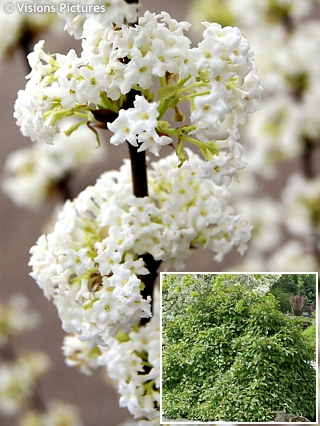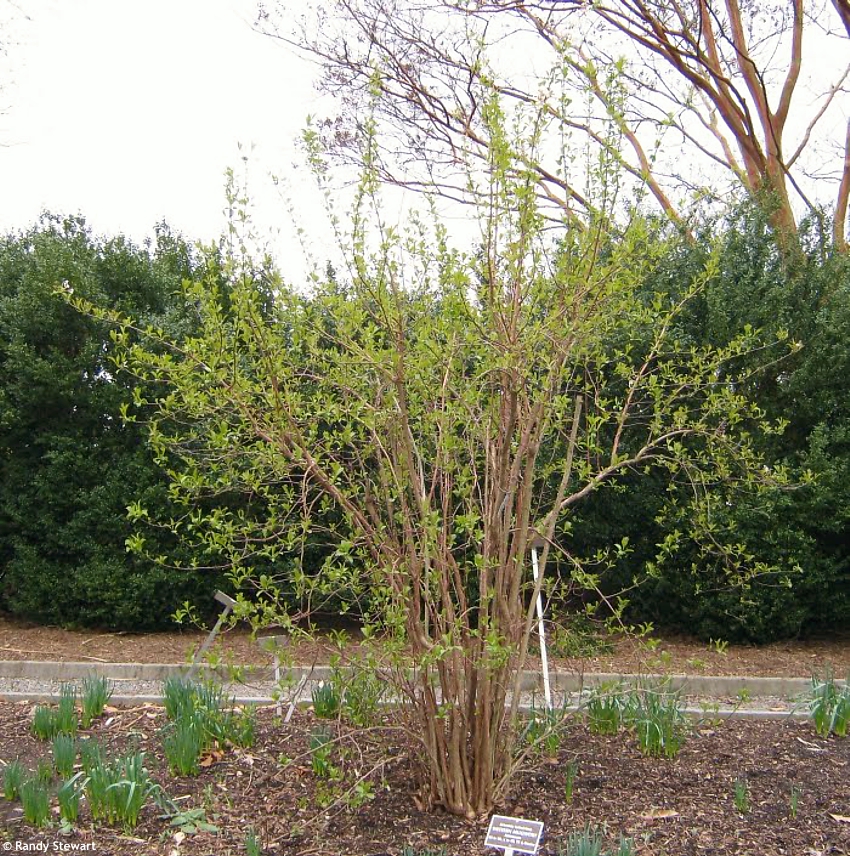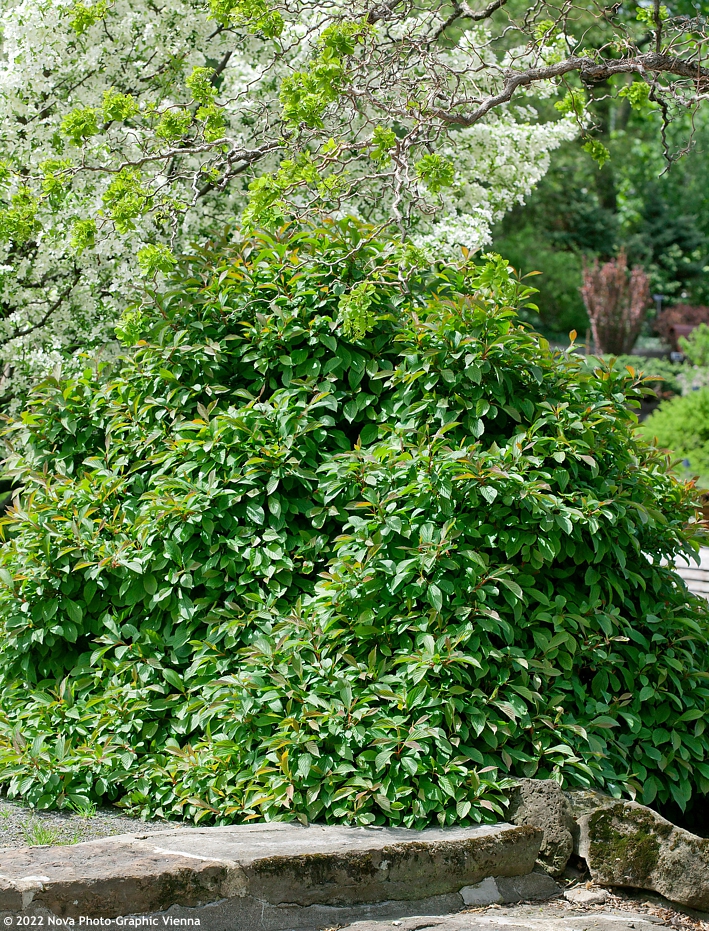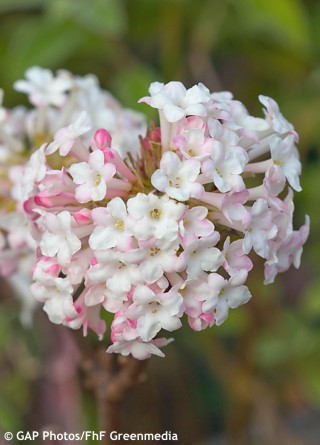Viburnum farreri 'CANDIDISSIMUM' Farrer's viburnum, fragrant viburnum
size/type
medium-sized shrub,taller shrub
usual height
2-3m
usual width
1,5-2,5m
leaves
deciduous broadleaf
colour of leaves
flowers
showy
colour of flowers
blooming time
December-April
location
full to partial sun
soil type
any (acidic to alkaline)
USDA zone (lowest)
4 (down to -34°C)
winter protection
for zone 5+6

for zone 7

categorized
Viburnum
Farrer viburnum, or more often called fragrant viburnum belongs to the most fragrant viburnums which produce flowers earliest of all. It comes from North China, and the flowers may appear as early as in December if the winter is late with frosts, or any time during January and February after the frosts have gone and the weather has turned warm for a longer period.Description of the plant:
Candidissimum is a fragrant viburnum variety whose name means ‘very white’. It is easy to infer that it will bear the whitest of white flowers. They are small, tubular, intensely sweetly scented, and composed in partially hanging clusters about 5 cm across. The inflorescence recalls that of Dawn viburnum but is smaller and less spherical.Fragrant viburnum makes a handsome shrub even when not in bloom. It has a rounded, compact, bushy habit with upright branches, and nice foliage. The leaves are deciduous, narrowly oval or elliptic, conspicuously veined, toothed at margins, light green in summer, and in autumn turn maroon first and later yellow and orange. Pruning is not needed to improve branching but can be done to keep the plant smaller. Prune it just after the blooming has finished before the leaves unfold completely.
Viburnums don't have specific soil needs. This one can even tolerate compacted ground and city pollution. The soil should be reasonably fertile and kept evenly moist for a few months after transplanting, though it can take long periods of drought once established. Grow it preferably in full sun or a very light partial shade to prevent it from losing its shape. Hardy to about -34 °C (USDA zone 4).
Last update 25-11-2022
QUICK PRICE OVERVIEW
CURRENTLY SOLD OUT
WANT TO TRY A SIMILAR PLANT?


















